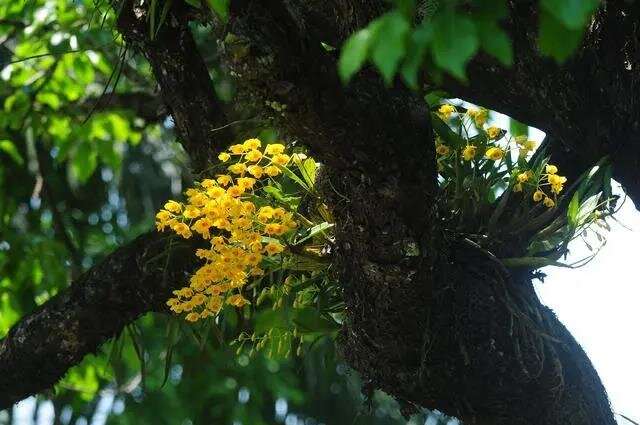Study sheds light on symbiont relationship between orchids and fungi

Dendrobium chrysotoxum is an epiphytic orchid species that grows on tree trunks or as a lithophyte on rocks. It is of great ornamental and medicinal importance. The over-exploitation of D. chrysotoxum from the wild continues to pose a serious threat to the orchid’s survival.
In a previous study, researchers from the Xishuangbanna Tropical Botanical Garden (XTBG) of the Chinese Academy of Sciences isolated a Tulasnella fungal strain (GC-15) from D. chrysotoxum protocorms using an in situ seed baiting technique, which is significantly effective in promoting in vitro seed germination and protocorm development. However, the interaction between the D. chrysotoxum protocorm and its mycobiont during seed germination remains unclear.
In a recent study published in Horticulturae, the researchers elucidated the process of protocorm development as well as the structure and properties of embryos and protocorms in D. chrysotoxum, in order to better understand the mutualism between D. chrysotoxum and its mycobiont.
Using anatomical techniques and scanning electron microscopy (SEM), the researchers studied detailed morphogenetic changes during the symbiotic germination of D. chrysotoxum inoculated with Tulasnella sp.
There are six developmental stages that were morphologically and anatomically defined during symbiotic seed germination. The embryo transformed into a protocorm at stage two, and a protrusion developed from the top of the protocorm at stage three and elongated to form the cotyledon at stage four. The stem apical meristem (SAM) was initiated at stage three and well developed at stage four. The first leaf and the root appeared at stages five and six, respectively.
Embryos of D. chrysotoxum develop polarized cell regions whose developmental consequences are programmed. Small embryonic cells at the top develop into cotyledons and SAM, and large embryonic cells at the base develop into rhizoids for access by fungal hyphae and specialized parenchyma cells as a symbiotic site for fungal colonization.
“Our study provides new insights into the structure and function of epiphytic orchid protocorms and sheds light on the symbiotic relationship between orchids and fungi,” said Luo Yan of XTBG.
More information:
Xinzhen Gao et al, Morphogenesis Changes in Protocorm Development during Symbiotic Seed Germination of Dendrobium chrysotoxum (Orchidaceae) with Its Mycobiont, Tulasnella sp., Horticulturae (2023). DOI: 10.3390/horticulturae9050531
Citation:
Study sheds light on symbiont relationship between orchids and fungi (2023, May 4)
retrieved 4 May 2023
from https://phys.org/news/2023-05-symbiont-relationship-orchids-fungi.html
This document is subject to copyright. Apart from any fair dealing for the purpose of private study or research, no
part may be reproduced without the written permission. The content is provided for information purposes only.
For all the latest Science News Click Here
For the latest news and updates, follow us on Google News.

